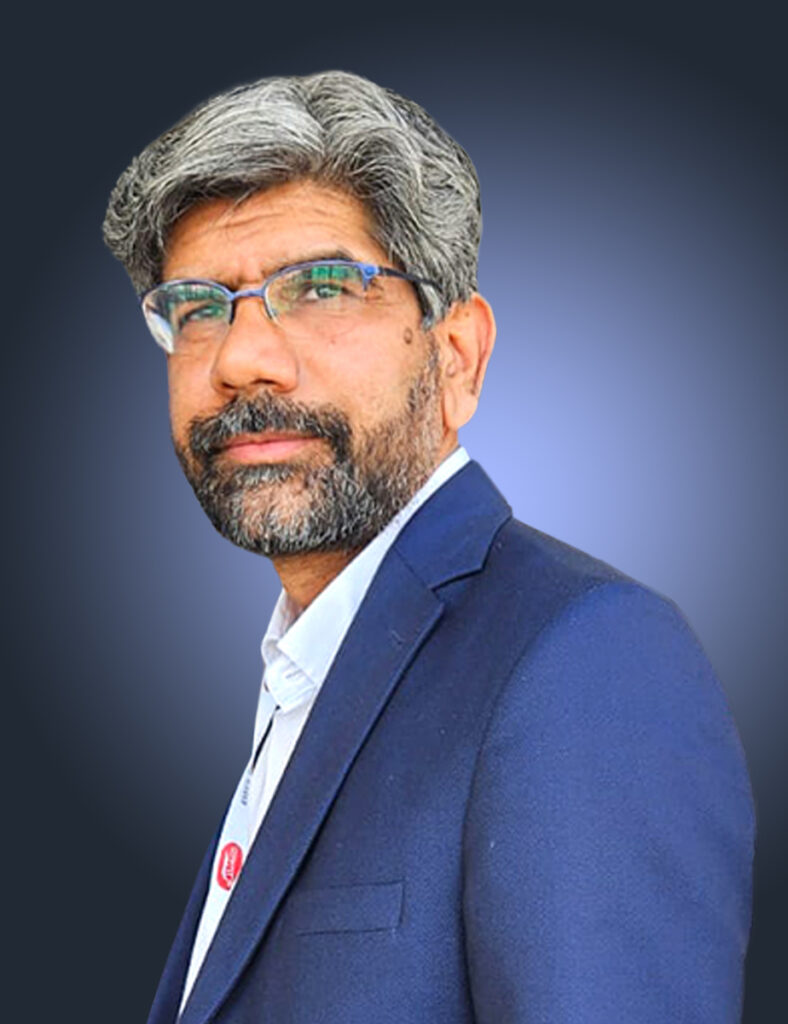Can’t ignore IDEC if pursuing a sustainable cooling narrative
In recent years, there has been a growing awareness of the need to adopt sustainable and energy-efficient technologies. One such technology that has gained significant attention is the IDEC (Indirect Direct Evaporative Cooling) system. The system not only provides a comfortable and healthy indoor environment but also offers energy savings and a reduced carbon footprint.
The Middle East presents a formidable challenge when it comes to climate control. Scorching daytime temperatures that routinely surpass 45 degrees C (113 degrees F), coupled with significant humidity levels, create an environment demanding not just effective cooling solutions but also sustainable ones. Traditional air conditioning, while undeniably efficient at combating the heat, comes at a considerable environmental cost.
Let’s talk about the limitations of traditional air conditioning systems and explore IDEC systems, which are gaining traction in the region with the passing of each day.
The unsustainable burden of traditional air conditioning
Conventional air conditioning units are notorious for their exorbitant energy consumption. During peak summer months, the demand for cooling surges, placing a tremendous strain on power grids.

To meet the surge in demand, power plants often resort to increased burning of fossil fuels, further exacerbating the problem. This not only contributes significantly to greenhouse gas emissions but also elevates air pollution levels, detrimental to public health.
Traditional air conditioners rely on refrigerants, many of which are potent greenhouse gases. Leaks and improper disposal of these gases can have a devastating impact on the environment. Studies have shown that certain refrigerants have a global warming potential thousands of times greater than carbon dioxide.
The looming threat of climate change
The environmental consequences of traditional air conditioning are becoming increasingly concerning. The ever-growing reliance on fossil fuels for power generation directly contributes to the burning of fossil fuels, which releases greenhouse gases like carbon dioxide, trapping heat
in the atmosphere and causing a gradual rise in global temperatures. This warming trend disrupts weather patterns, leading to extreme weather events like heatwaves, droughts and floods, which we are sadly witness to. Not only that, as the atmosphere absorbs more carbon dioxide, the oceans become more acidic, posing a significant threat to marine ecosystems.
Traditional package air conditioners versus IDEC systems
A direct comparison between IDEC systems and traditional package air conditioners is not entirely accurate. Package units function as heat pumps, transferring heat from the indoor environment to the outdoors. This process cools the interior but raises the outside temperature.
IDEC systems operate entirely on fresh air, significantly enhancing Indoor Air Quality. They effectively convert hot outside air – potentially reaching 40-50 degrees Celsius – to significantly cooler air – around 14-18 degrees Celsius.
For a more relevant comparison, consider Fresh Air Handling Units. IDEC systems excel as a cost-effective and energy-efficient alternative to FAHUs.
In the face of these mounting challenges, IDEC systems offer a beacon of hope. They leverage the natural phenomenon of evaporative cooling to achieve cool air without relying heavily on electricity. They use natural process of evaporation for cooling, making them a more sustainable alternative to conventional air conditioning methods.
IDEC systems excel in arid regions due to their ability to effectively cool through evaporative processes. This makes them a suitable solution for areas experiencing hot and dry weather conditions. A significant advantage of IDEC systems is their focus on fresh air. They continuously introduce and circulate fresh outdoor air, promoting a healthier indoor environment.
IDEC systems boast significant energy savings compared to traditional air conditioning. By using natural cooling methods and minimal electricity, the environmental impact is substantially reduced. Studies suggest energy savings of up to 83% can be achieved.
IDEC systems operate without relying on harmful refrigerants. This eliminates the environmental concerns associated with their production, use and potential leaks. While a precise estimate requires specific details, studies indicate that a typical air conditioner can emit 2,000-3,000 pounds of CO2, annually. Replacing these systems with IDEC technology has the potential to significantly reduce these emissions on a large scale.
IDEC systems also help to reduce carbon footprint by minimizing reliance on traditional electrical cooling. This aligns with global efforts to combat climate change. A hypothetical scenario involving the installation of five million tons of IDEC systems in Riyadh could demonstrably decrease the city’s annual CO2 emissions by millions of pounds, annually. This aligns with the vision of a “Green Saudi Arabia”, outlined in Saudi Vision 2030.
Types of IDEC systems
IDEC systems operate differently depending on the level of humidity in the environment. They are divided into three types: Two-stage IDEC systems, three-stage IDEC systems and four-stage IDEC Systems…
1. Two-Stage IDEC (dry climate)
– Stage 1 (Indirect Cooling): Outside air is drawn through a heat exchanger containing a water-cooled media. As the air passes through, it results in a significant temperature drop without increase in humidity.
– Stage 2 (Direct Cooling): The pre-cooled air is further cooled by directly evaporating water using a mist. This adds some humidity to the air, but due to the initial dryness, it remains comfortable.
2. Three-Stage IDEC (moderate humidity of up to 30%)
– Stage 1 (Indirect Cooling): It involves a water-cooled heat exchanger that provides pre-cooling to the ambient air.
– Stage 2 (Indirect Cooling): It can be direct expansion (freon-based compressor) cooling stage or air-to-air heat exchanger using the return air heat recovery.
– Stage 3: (Direct Cooling): It is the same cooling process mentioned in the two-stage system.
3. Four-Stage or Hybrid IDEC Systems: (humidity up to 60% or above)
While IDEC systems excel in dry and semi-arid climates, their effectiveness can be limited to regions with extreme humidity (above 60%). As humidity rises, the air’s capacity to absorb moisture through evaporation decreases. This can lead to increased indoor humidity levels, and excessive moisture in the air can lead to a feeling of discomfort and potentially contribute to mould growth.
The Four-Stage or Hybrid IDEC System is a solution to deal with the challenge of extreme humidity in IDEC systems. These systems incorporate compressors alongside the traditional IDEC stages. During periods of high humidity, the compressor can provide additional cooling to supplement the evaporative cooling process. This allows for continuous dehumidification and maintains the effectiveness of the indirect cooling stage.
The road to a sustainable future
Embracing innovative and sustainable cooling technologies like IDEC is crucial for the future of the Middle East. Governments in the region can play a vital role by providing incentives for the adoption of IDEC systems through tax breaks or subsidies. Investing in research and development to further enhance the efficiency and applicability of IDEC technology in various climatic conditions is the way forward.
Raising public awareness about the environmental impact of traditional air conditioning and the benefits of sustainable cooling solutions, like IDEC, is essential for driving wider adoption.
A holistic approach to sustainable climate control extends beyond just cooling buildings. Implementing strategies like planting trees and incorporating reflective materials in building design can help reduce the urban heat island effect and lessen the overall cooling demand.
Promoting energy-efficient practices in all sectors, from industrial to residential, can significantly reduce the environmental footprint associated with power generation.
The scorching temperatures and rising humidity levels in the Middle East necessitate a paradigm shift towards sustainable cooling solutions. IDEC systems offer a promising alternative, providing effective cooling while minimising environmental impact. By embracing innovation, fostering public awareness and implementing broader sustainability initiatives, the region can firmly tread towards a cooler and greener future.
The writer is General Manager, HVAC and Power Solutions at Windmason Arabia Company. He may be reached at windmason07@gmail.com.

